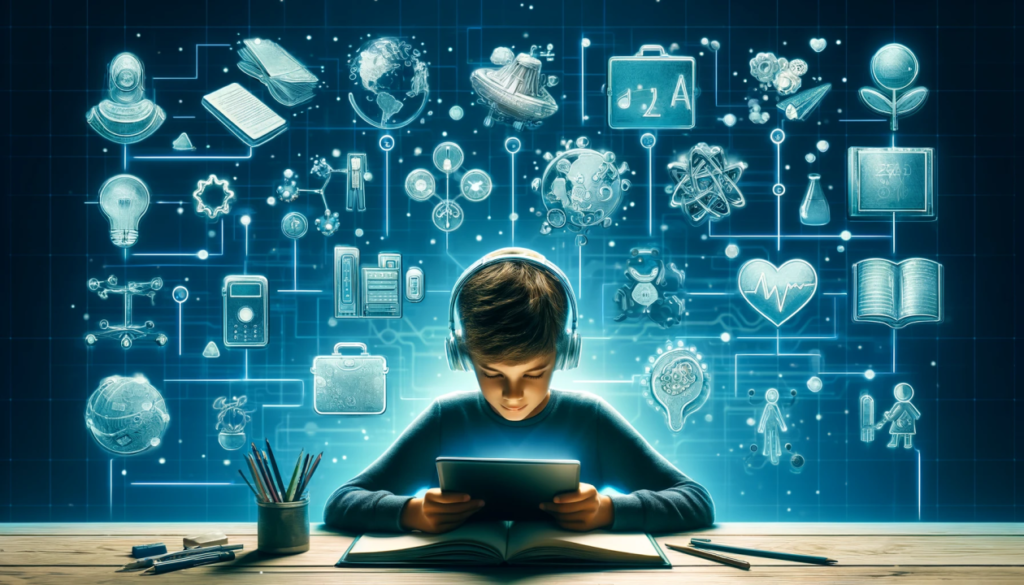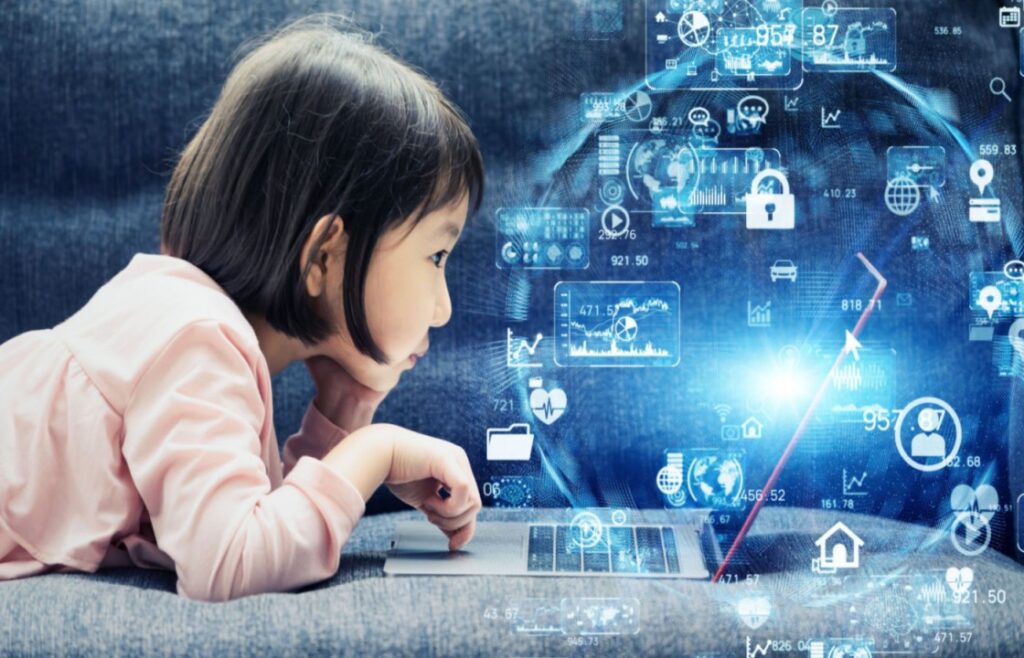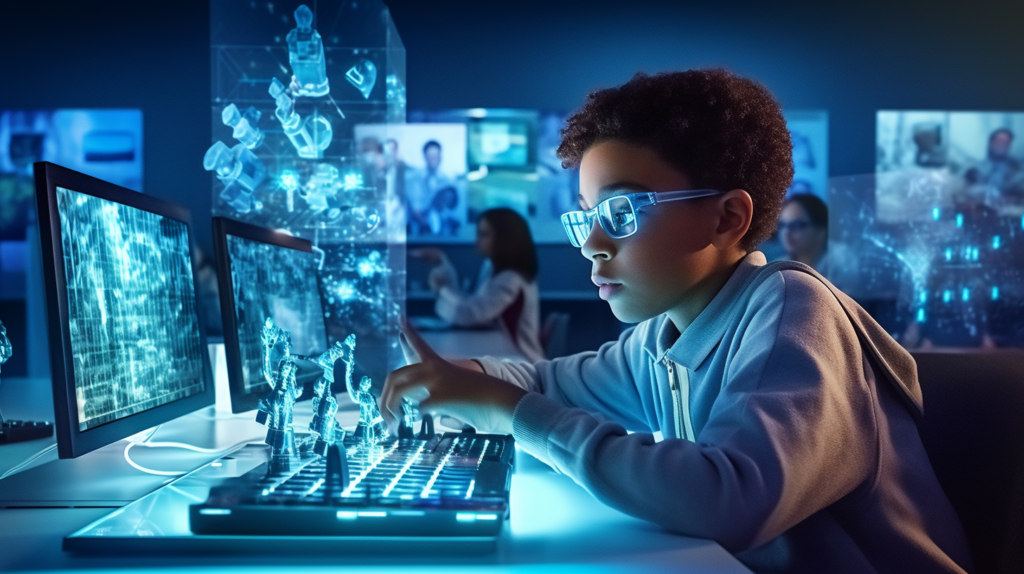The Future of Personalized Learning and Teaching
The rise of Artificial Intelligence (AI) has profoundly impacted numerous industries, but one of the sectors poised for the most transformative change is education. As AI continues to evolve, it holds the potential to revolutionize traditional teaching and learning methods, making education more personalized, efficient, and accessible. From adaptive learning systems to automated grading, AI is reshaping the way students learn and educators teach.
In this blog, we’ll explore how AI is transforming education and what the future of personalized learning and teaching looks like in an AI-driven world.
The Current State of AI in Education
AI in education is already present in various forms, improving the learning experience and addressing some of the long-standing challenges in traditional education systems. Some of the current applications of AI in education include:
1. Adaptive Learning Platforms
One of the most significant advancements in AI-powered education is adaptive learning platforms. These platforms use AI algorithms to analyze students’ performance, learning habits, and areas of difficulty. Based on this analysis, the platform can tailor content and instruction to each student’s individual needs.
For example, platforms like DreamBox and Smart Sparrow adjust lessons in real-time, ensuring that students receive materials that match their level of understanding. If a student struggles with a particular concept, the system can offer additional resources, explanations, and practice problems. Conversely, if a student masters a concept quickly, the platform can move them ahead to more challenging material.
2. Automated Grading Systems
Grading assignments can be a time-consuming task for educators, especially with large class sizes. AI-powered automated grading systems are helping to streamline this process by assessing student work, from multiple-choice quizzes to essay-style assignments.
Programs like Gradescope and Turnitin use machine learning algorithms to grade assignments, detect plagiarism, and provide feedback. While AI grading systems are not perfect and often require human oversight, they save educators valuable time and provide students with quicker feedback, allowing them to improve more efficiently.
3. Intelligent Tutoring Systems
AI has the potential to provide personalized tutoring to students, filling in the gaps where traditional classroom instruction may fall short. Intelligent tutoring systems (ITS) use AI to offer one-on-one tutoring, guiding students through difficult concepts and providing immediate feedback.
Examples include AI-powered platforms like Carnegie Learning and Squirrel AI, which are designed to simulate the role of a human tutor. These systems analyze student responses, detect patterns in their learning, and offer personalized guidance to help students understand complex topics.
4. Virtual Classrooms and AI-Powered Learning Assistants
With the increasing popularity of remote and online learning, virtual classrooms have become a vital part of modern education. AI is enhancing virtual classrooms by powering intelligent learning assistants that help students and educators.
For instance, platforms like Coursera and EdX use AI algorithms to recommend courses based on students’ interests and progress. AI chatbots, such as Jill Watson at Georgia Tech, can answer students’ questions, provide resources, and assist in administrative tasks, reducing the burden on instructors and support staff.

The Benefits of AI in Education
The integration of AI in education offers numerous benefits for both students and educators. These benefits include increased accessibility, personalized learning, and improved efficiency in teaching. Let’s explore some of these advantages in more detail.
1. Personalized Learning Experiences
One of the most significant advantages of AI in education is its ability to personalize learning experiences. Traditional classrooms follow a one-size-fits-all approach, where students progress at the same pace regardless of their individual learning needs. This can result in some students feeling left behind while others become disengaged because the material is too easy.
AI-driven adaptive learning platforms address this issue by tailoring lessons to each student’s unique learning style, pace, and preferences. Whether a student needs additional support or more challenging material, AI systems can adjust the learning path in real time, ensuring that students are always working at an optimal level.
2. Improved Student Engagement and Motivation
AI can enhance student engagement by creating more interactive and dynamic learning environments. Gamified learning platforms, for instance, use AI to incorporate game mechanics like rewards, levels, and challenges into educational content, making learning more enjoyable and motivating.
AI can also provide instant feedback, helping students stay on track and correct mistakes quickly. This immediacy can boost confidence and motivation, as students are more likely to feel a sense of accomplishment when they can see their progress in real time.
3. Enhanced Accessibility and Inclusivity
AI-powered tools can significantly improve the accessibility of education for students with diverse needs. For example, AI-driven speech-to-text programs can transcribe lectures in real time, making them more accessible to students with hearing impairments. Similarly, text-to-speech systems can help students with visual impairments by reading written content aloud.
AI can also assist students who speak different languages by offering real-time translation services, breaking down language barriers and creating a more inclusive learning environment.
4. Streamlined Administrative Tasks
Educators often spend a significant portion of their time on administrative tasks, such as grading, attendance tracking, and managing student records. AI can automate many of these tasks, freeing up educators to focus more on teaching and interacting with students.
For example, AI-powered tools can automatically grade quizzes, track student progress, and even manage scheduling and communication between students and teachers. This increased efficiency allows educators to dedicate more time to developing lesson plans and engaging with their students.
5. Data-Driven Insights for Educators
AI can provide educators with valuable data-driven insights into student performance and learning patterns. By analyzing large amounts of data from student interactions, AI can help teachers identify which areas students are struggling with and adjust their teaching methods accordingly.
For example, if AI detects that a large portion of the class is struggling with a particular topic, the teacher can spend more time reviewing that concept. Conversely, if students excel in a particular area, the teacher can move on to more advanced material. This data-driven approach helps teachers make informed decisions that lead to better learning outcomes.

The Challenges of AI in Education
While AI offers many promising benefits, there are also challenges that educators, policymakers, and institutions must address to ensure the successful integration of AI in education.
1. Ethical Concerns
AI in education raises ethical concerns related to privacy, data security, and bias. AI systems collect vast amounts of data on students, including their academic performance, behavior, and personal information. Ensuring that this data is stored securely and used responsibly is critical to maintaining trust in AI-powered education systems.
Moreover, AI algorithms can sometimes be biased, leading to unfair treatment of certain groups of students. If AI systems are trained on biased data, they may reinforce existing inequalities rather than addressing them. It’s essential for developers and educators to work together to minimize bias in AI systems and ensure that they are used equitably.
2. The Digital Divide
AI-powered education tools rely on technology, and not all students have equal access to the necessary devices or reliable internet connections. The digital divide can exacerbate educational inequalities, as students in underserved communities may struggle to benefit from AI-driven learning platforms.
To address this issue, policymakers and educational institutions must work to ensure that all students have access to the technology and resources they need to take full advantage of AI-powered education.
3. Teacher Training and Support
The successful implementation of AI in education requires that educators be adequately trained in how to use these tools effectively. Many teachers may be unfamiliar with AI technology and hesitant to adopt it in their classrooms. Providing professional development and ongoing support is essential to helping teachers integrate AI into their teaching methods.
AI should be viewed as a tool that enhances and supports teachers, not as a replacement for them. By empowering educators to use AI effectively, we can create a more balanced and beneficial approach to AI-powered education.

The Future of AI in Education
The future of AI in education is filled with exciting possibilities. As AI technology continues to advance, we can expect to see even more innovative applications that enhance the learning experience for students of all ages.
1. Lifelong Learning and Continuous Education
AI has the potential to support lifelong learning by offering personalized education at all stages of life. From K-12 students to adult learners, AI-powered platforms can provide tailored learning experiences that evolve as individuals progress in their education and careers.
As the job market changes and new skills are required, AI can help workers upskill and reskill by offering personalized training programs. This will be especially important in the age of automation, where workers will need to adapt to new roles and industries.
2. AI-Powered Virtual Classrooms
In the future, AI-powered virtual classrooms could become even more advanced, offering fully immersive learning experiences. Virtual reality (VR) and augmented reality (AR) technologies, combined with AI, could create interactive and engaging environments where students can explore new concepts and ideas in ways that go beyond traditional textbooks.
For example, students could take virtual field trips to historical sites, interact with AI-driven avatars in science labs, or participate in AI-facilitated debates with peers from around the world.
3. AI as a Collaborative Tool
In the future, AI will likely become a more collaborative tool in the classroom. Rather than replacing teachers, AI will work alongside educators, helping them identify areas where students need extra support and providing real-time data to improve instructional strategies.
This collaborative approach will create a more personalized, effective, and engaging learning environment for students, while also empowering teachers to focus on what they do best: inspiring and educating.
4. AI and Special Education: Bridging the Gap for Students with Disabilities
Furthermore, AI is playing a crucial role in special education by offering personalized support to students with disabilities. For instance, AI-powered tools can help students with learning disabilities by adjusting the pace and format of lessons to meet their individual needs. Not only does this enhance learning, but it also makes education more inclusive. In addition, AI can assist students with physical impairments by offering voice-activated learning systems or providing real-time transcriptions. As a result, students who may have previously struggled to keep up in traditional classrooms are now able to participate fully, thus narrowing the gap in educational achievement.

Conclusion
AI is already transforming education, and its impact will only continue to grow in the coming years. From personalized learning experiences to intelligent tutoring systems, AI has the potential to revolutionize how students learn and how educators teach.
While challenges remain, such as ethical concerns and the digital divide, the benefits of AI in education are undeniable. By leveraging AI technology, we can create a more inclusive, efficient, and engaging education system that prepares students for the future.
As AI continues to evolve, the future of education looks brighter than ever. The key to unlocking this potential lies in ensuring that AI is used responsibly, equitably, and in collaboration with educators to create the best possible learning experiences for students.

